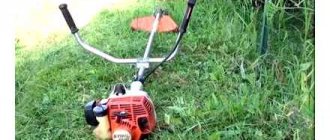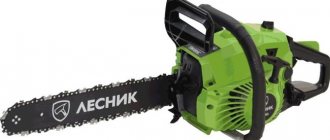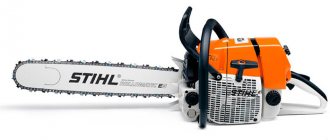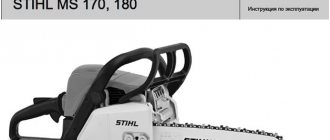The serviceability of load-handling devices is strictly controlled, both in production and by third-party inspection bodies. Even small defects, which seem insignificant without knowledge of the specifics, can lead to the rupture of the jib and the fall of the load.
The strictness of the requirements for the condition of slings forces enterprise management to purchase them with enviable consistency. Therefore, measures aimed at extending the service life of the jaws can significantly reduce this cost item.
Service life of slings and chucks
The service life of chucks, rope, chain or textile, is not limited by time. The criterion for deterioration is damage. The presence of these damages is assessed during a static load test. Recommended inspection intervals are:
During operation, slings must be subject to periodic inspection at specified times (but not less than every 5 and 10 days) with constant use on cranes
- 1 month – for textile slings;
- 3 months – for rope slings;
- 6 months – for chain slings.
The list of rules according to which lifting devices are allowed to work is generally regulated by two documents:
- rules for the design and safe operation of load-lifting cranes;
- Federal Law “Safety Rules for Hazardous Industrial Facilities Where Lifting Structures Are Used”
Based on these documents, industry instructions are developed locally, which provide algorithms for checking and rejecting slings.
Checking technical condition
All lifting devices (HLD) must undergo periodic inspection and testing to confirm their technical condition. Slings and load-handling devices are checked before use and during further operation. This allows you to determine the condition of the product and reject unsuitable products.
The maximum permissible working load is determined during the load test period. New cargo slings that have been tested in the factory and have no external damage are not subject to inspection.
Tests and technical examination of slings manufactured according to RD 24-S3K-01-01 are carried out under a static load exceeding 1.25 times the load-carrying capacity of the product for 3 minutes. Inspection is carried out after 6 months of storage. When used in one shift, the service life of textile slings is 1.5 months from the start of work.
Rope cleats manufactured according to RD-10-33-93 and GOST 25573-82 are tested with a static load of 1.3 times the sling’s carrying capacity for 3 minutes. When working in one shift, SKK (USK2) and SKP (USK1) can be used for 3 months, and single-leg and multi-leg slings SK - for 6 months from the start of operation.
Chain slings manufactured according to TU 3150-001-52466920-2005, RD 11-07-2007, PB-10-382-00 are tested under a static load that is twice the load capacity of the product for 3 minutes. When used in 1 shift, the product can be used for 1.5 years from the start of operation.
How to extend service life?
Conventionally, measures to extend the service life of the chucks will be divided into two points:
Proper storage
Correct operation
Proper storage
First, let's look at the main points related to sling storage.
Organize a storage location for gas supplies that is protected from the effects of destructive factors. Hot metal, paint, petroleum products, chemicals, the movement of any mechanisms in the storage area - all this can damage the jig.
Store slings hanging or on designated racks. This is especially true for rope slings. Twisting and storing on the floor or ground will cause premature failure.
Do not store rope and textile slings near sources of high temperature (near a heating boiler or blast furnace). Synthetic fabric may simply melt. And the lubricant with which the rope core is impregnated actively comes out when heated and is quickly wiped off while working with the rope. Over time, this will cause rust and friction of the dry lay wires, which will lead to their rapid wear and breakage.
Correct operation
To a greater extent, the service life of the chucks is influenced by proper operation. To extend the life of the slings, adhere to the following rules.
Use the chawls as intended. Move hot workpieces and containers with molten metal using chain slings. Transport loads without protruding sharp surfaces using rope or textile slings. For northern regions, use special slings with climatic modification HL.
Do not exceed the permissible load capacity. The increased load will lead to stretching of the jaws and deformation of the chain links, changing the structure of the rope or fabric lay.
If the cargo has mounting loops, use them. Slinging methods not specified in the instructions are a common cause of damage to the chucks or loss of the load.
Avoid direct contact of the wire rope with angular loads. Use underlays with smooth transitions on the contact surface of the slings. The backings will protect the braces from bending at sharp angles. The bend in the rope sling resulting from slinging angular loads cannot be straightened out.
Do not use chucks to release pinched or frozen loads. Dynamic loads in this case can damage the gas protection system.
Do not drag even light loads with slings without lifting them off the surface.
Correct non-critical damage to slings in a timely manner. Repair damaged hook locks. Remove defects from the outer surfaces of the thimbles. If the ends of the beams are secured with clamps ( DIN 1142 or DIN 741) , be sure to ensure that all plates and fastening bolts with nuts are in place.
Also make sure that identification tags are present on all used jaws. Do not forget to inspect the slings once every 10 days and record them in the inspection log of the gas station. Remember: in the event of a load loss incident, the inspector will first remove the inspection log.
Options for cleaning the sewer system
There are several ways to deal with blockages, all of them are available to the home handyman and are easy to implement. Conventionally, they can be divided into two main types: chemical and mechanical.
Many manufacturers offer drain cleaning chemicals. Any hardware store will offer you several options to choose from.
All products are based on sodium hydroxide or caustic soda, except natural products
You need to work with chemicals very carefully, following the basic rules:
- Before use, you need to carefully read the instructions and make sure that the composition will not harm your pipes. You should be especially careful if the pipes are made of plastic;
- to clean the drain in the bathroom, you need to select a composition that dissolves hair; for the kitchen, select a product that dissolves grease;
- When buying a composition, give preference to the more expensive one. For this product, the price usually matches the quality.
The most popular household chemical product is “Mole”. This is caustic soda powder. A couple of tablespoons and a glass of hot water are enough - and a couple of hours after spilling, your sewer system is working again.
Mole is a proven and effective remedy
Mechanical methods boil down to using a plunger and a cable to clean the sewer.
A plunger is a rubber membrane that can move the contents of a plug by creating a pressure difference. The principle of operation of the device is simple - the membrane is pressed against the drain hole and pumped with force several times.
After pumping, the destroyed plug is removed by pouring boiling water
Cleaning pipes with a cable will help you cope with completely hopeless situations when neither chemicals nor a plunger can cope. The method of working with this tool is not so simple and requires some skill.
Rejection standards for rope slings
During operation, slings must be subjected to periodic inspection within established periods (but not less than every 5 and 10 days) with constant use on cranes operating in conditions of classification groups 7K-8K and 1K-6K, respectively.
Rope slings should not be allowed to work if:
Cracks in the crimp bushing or a change in the size of the bushings by more than 10% of the original
Braids or other protective elements are damaged or missing, as well as if there are protruding ends of the wire in the braided areas.
Delaminations, tears and hairlines.
There are knots, twists, kinks and creases in the rope.
Broken rope wires.
Reduction in the diameter of rope slings due to wear or corrosion by 7% or more.
The lanyard tag is missing or damaged.
How to assess the condition of the cable core (its property)
Standard standards for issuing personal protective equipment
Based on the standards for rejecting steel ropes, they can be considered faulty even in the absence of external damage. This happens if flaw detection reveals damage to the core. The rope is considered unsuitable for use if the inspection reveals more than 18% loss of wires of the internal part.
Note! Not every enterprise has such equipment, as well as specialists to service it. And this is normal, because there is no need to constantly check the sealed parameters of the core
These tests are only required for products that must meet very high safety requirements.
In production
Norms for rejecting chain slings
Chain slings should not be allowed to work if:
Reduction in the cross-sectional diameter of chain links and hanging links by more than 10%.
Elongation of chain link and hanging links by more than 3%.
The difference in branch lengths is more than 1.5% of the total length of the sling
There are no safety locks on the end elements.
There are cracks, delaminations, tears on all elements.
Threaded connections (brackets) are damaged.
There is no identification tag.
Remedies
There are different methods for dealing with blockages, each of which has its own characteristics. Conventionally, they are divided into two types.
- Chemical. These include various products with a chemical composition in the form of powders or liquids. Instructions for their use are usually indicated on the packaging. Such substances are mainly used in domestic conditions, where simple blockages occur.
- Mechanical. They are presented in the form of plungers and cables. A plunger in the form of a dense rubber membrane with a handle removes small blockages by creating a pressure difference in the system. For more serious traffic jams, special cables are provided that can be used not only in internal systems, but also in external sewers.
When the sewer is completely ready for cleaning, the working end of the cable is lowered into the pipe, and the following actions are performed:
- rotate the cable in one direction, promoting its gradual unwinding;
- when the cable reaches a blockage, move back and forth, periodically removing the product and inspecting it for debris;
- after removing the plug, thoroughly clean the pipe from deposited particles in order to achieve maximum results;
- To completely eliminate small elements, it is worth flushing the system with hot water.
If water flows well through the sewer pipes, then the clogging problem has been completely eliminated. At the end of this process, the cable must be rinsed well, dried and wrapped in paper for further storage. It is not recommended to store the device in polyethylene, as this may adversely affect the appearance of the device. Proper care will extend the life of the product, as well as preserve its original qualities.
Criteria for choosing metal pipes for heating
When building a house and installing a heating system with your own hands, the main question arises - which metal pipes are better? As you know, metals used for communications are classified as:
- black;
- color;
- alloys.
The first category includes rolled steel, galvanized iron and cast iron. Non-ferrous metals do not rust, but oxidize, these are:
- bronze;
- copper;
- aluminum, etc.
The type and layout of the heating system are one of the decisive factors when choosing pipes for the network
Main selection criteria:
- type of heating system (gravity or forced);
- maximum load (the conditions of the northern regions differ from the heating period of the southern latitudes);
- the ability to replace sections of the pipeline with the greatest load;
- installation method (hidden or closed, inside the walls);
- general configuration of the system, including the number of floors of a private house;
- design and maximum pressure inside;
- type of coolant;
- possibilities for transportation and installation with your own hands;
- total length and budget framework for installation;
- the maximum possible temperature in the system.
Depending on climate
Since the operating time of winter and summer clothing may be different, depending on the weather conditions of the region and the seasonal work performed, the time of wearing them should also be different.
Lifespan of winter workwear
The service life of the winter set depends on the climate zone to which the region belongs. That is, there are no uniform standards and those responsible for the service life of work clothes must know their climate zone in order to write off CO on time.
Climate zones were established based on data on average annual temperatures and average wind speed. According to this principle, the territory of the Russian Federation is divided into 4 belts; the manager can find out his belt in the same order of the Ministry of Labor under No. 63. Each belt has its own class of protection, which must be provided by clothing. Class 1 refers to the warmest regions, class 4 to the harshest.
The service life for each class will be as follows
There is also a special climate zone characteristic of the Arctic. There, the winter set should be changed every 1.5 years, and shoes every 2 years.
For how long are summer work clothes issued to workers by law?
There are no fixed service periods for each type of activity. The law says that the service life of summer clothing is 1 year, but the commission must further consider the issue of a possible extension of the period if there are grounds for this.
Not every production facility provides shoes for the summer period. For each industry, the period will be different, depending on the conditions and specialization of the employee. But, according to the norms, shoes cannot be worn for more than three years.
Application of sewer cable
Design features
This widespread device allows you to effectively remove blockages in wastewater removal systems from an apartment or country house.
There are several types of product:
- wire;
- flexible shaft;
- steel tape.
A standard drain cleaning cable consists of a flexible steel core braided with some wire in the form of springs. The direction of the skeins alternates from layer to layer until the desired diameter of the device is achieved.
The material for the manufacture of the device is high-strength steel ST70, which can withstand rotation loads of up to 3500 rpm.
Photo of a plumbing cable
For ease of use, one end of the device is equipped with a handle with which the spring rotates, and on the other, special attachments can be installed to destroy the plug in the sewer system.
Pipe cleaning cable is sold at a regular hardware store. Its price is low, so it is advisable to purchase the product in advance, so that in the event of an emergency you are fully equipped.
Cable winding diagram for sewer cleaning
Making your own cable
You can make a tool for clearing sewer blockages with your own hands.
The instructions below will help you with this:
- The material for manufacturing will be an ordinary flexible steel cable of a suitable diameter.
- One end of it must be bent and slightly fluffed.
- Attach a ring or other device to the other end that allows you to rotate the cable while it is in the sewer system.
- It is recommended to place a piece of plastic pipe below the ring. You can use it to hold the cable while cleaning the drain.
To remove the blockage, you need to insert a homemade device into the sewer and, using rotational movements, slowly move it inward until the blockage is completely removed.
Homemade cable for dealing with blockages
Procedure for using a plumbing cable
Now let's look at how to clean pipes with a cable.
The work process is simple and consists of several sequential actions:
- A device with a nozzle installed on it is placed inside the drain system or in the opening of the toilet and moved to the point where the blockage has formed.
- To facilitate movement, it is necessary to make light rotational movements clockwise. This can be done using the handle.
- Once the plug has been removed and the permeability of the sewer system has been restored, the pipeline should be further cleaned using a plunger.
- The final stage is flushing the drain system with boiling water. This will help remove residual debris, disinfect the system and get rid of unpleasant odors from the pipes.
Scheme for using a cable to clean a toilet
Types of cable attachments
In order to effectively remove various types of blockages, certain attachments can be attached to the cable. Each of them is described in more detail in the table.
| Type of nozzle | Description |
| Donnaya | It is very good at removing plugs from the sewer system formed by sand, stone chips or bottom silt. |
| Punchy | Used to break the integrity and remove old, tightly packed plugs. |
| With hook | It is a hook that can be used to hook and remove clogs caused by hair, wool or textile fibers from the sewer system. |
| Loop | As the name implies, it is a loop made of high-strength galvanized spring steel. Allows you to effectively clean the interior of the toilet water seal. |
Plumbing cable attachments
What is a safety harness?
Only natural drying of clean products is allowed. At the end of the warranty period, the safety rope is taken out of service and then destroyed! The latter is necessary to prevent third parties from using the product.
Safety rope tests
- The straps must always be secured as tightly as possible to prevent accidental loosening.
- A correctly configured safety harness provides the ability to fine-tune the straps according to the volume of the body, because only tight fixation of the harness will protect you from unexpected injuries in an emergency situation.
It turns out that from May 5, 2022, any personal protective equipment must undergo periodic testing of suitability for further use. Periodic inspections must be carried out by competent employees who have undergone appropriate training, or by organizations accredited by the manufacturer, depending on the operating conditions and taking into account the requirements of the manufacturer, based on his conclusion, PPE is either accepted or rejected.
As you know, on May 5, 2022, new “Rules on labor protection when working at height” come into force. The new Rules, in comparison with the previously in force POT RM-012-2000 (Inter-industry rules for labor protection when working at height), carry quite dramatic changes. Let's look at the most important innovations and offer our solutions.
Personal fall protection equipment (PPE)
Since 2022, fines for violations of labor safety rules and specifically for failure to provide workers with personal protective equipment have increased. According to Article 5.27 of the Code of Administrative Offenses of the Russian Federation, these violations are subject to the imposition of an administrative fine on officials in the amount of 20,000 - 30,000 rubles; for organizations 100,000 - 150,000 rubles3.
Thank you1 Didn't find anything new1
26 Apr 2022 uristgd 325
Black steel
Steel rusts. It rusts especially quickly with prolonged contact with water. That is why the service life of steel risers and connections laid down in the regulatory documents, frankly speaking, is not amazingly long.
Standard service life
The main document establishing the standard service life of utilities in a residential building is VSN (departmental building codes) number 58-88, adopted in 1988. They regulate the timing of maintenance, reconstruction and repair of buildings.
The document regulates the procedure for repair and reconstruction of buildings
Appendix No. 3 to the document provides the following figures:
| Engineering system element | Standard service life, years |
| Riser or cold water supply from gas pipes | 15 |
| A riser or hot water supply from gas pipes in a building with a closed heating system (without taking hot water from the heating system) | 10 |
| The same, in a building with an open heating system (DHW is taken from the heating circuit) | 15 |
| Heated towel rails in the DHW system | 15 |
Destructive factors
What factors limit the service life of VGP pipes without anti-corrosion coating:
| Image | Description |
Steel water supply risers. The first fistula that caused the ceiling to become wet appeared in the ceiling | Corrosion. Rusting of the pipe is accelerated by a damaged outer layer of paint, frequent shutdowns of the water supply (in this case, the unpainted inner surface of the pipe is in contact with air with high humidity) and poor ventilation in the bathroom (read: consistently high humidity). The first fistulas appear on longitudinal welds (VGP pipes GOST 3262 are electric welded), on threads where the thickness of the pipe walls is minimal, and in ceilings where the surface of the pipes is not ventilated and (in the case of cold water risers) is continuously wetted by the condensate falling on them. |
Lime deposits and rust have almost completely blocked the gap in the water pipe | Overgrowing of pipes with deposits (primarily lime salts) and rust. The rate of overgrowing is directly proportional to the hardness of water in the region: where it erodes sediment on the way to the consumer, the clearance in the water supply decreases much faster. The narrowing of the lumen leads to a drop in water pressure on plumbing fixtures connected to the water supply. |
The diameter of steel risers is selected taking into account the reduction in pipe capacity due to deposits | Pipeline diameter. The larger the internal cross-section of the pipe, the longer it maintains acceptable throughput. |
The thicker the wall, the longer the pipe can resist corrosion. | Wall thickness. According to GOST 3262, ordinary, reinforced and lightweight pipes are produced. It is clear that those reinforced before the first through fistulas appear will last longer. |
Chemical flushing can transform old plumbing
Actual service life
In the author’s memory, the minimum trouble-free service life of a steel cold water supply system in a new building was only 10 years. The house was built and delivered shortly before the collapse of the Union, in conditions of austerity on building materials and the actual inoperability of Soviet norms and standards. Lightweight VGP pipes, purchased for reasons of economy, quickly and en masse began to leak at welded joints and threads.
The photo shows the typical condition of a cold water supply riser after 20 years of service.
The oldest engineering systems made of black steel have been in service for more than half a century.
In addition to the large thickness of the pipe walls, their longevity is facilitated by:
- Low humidity levels;
- No condensate on cold water pipes;
- Periodic painting of risers and liners;
- Low content of mineral salts in water.











